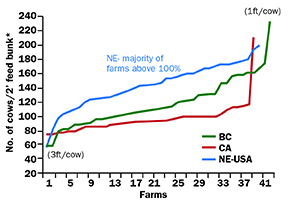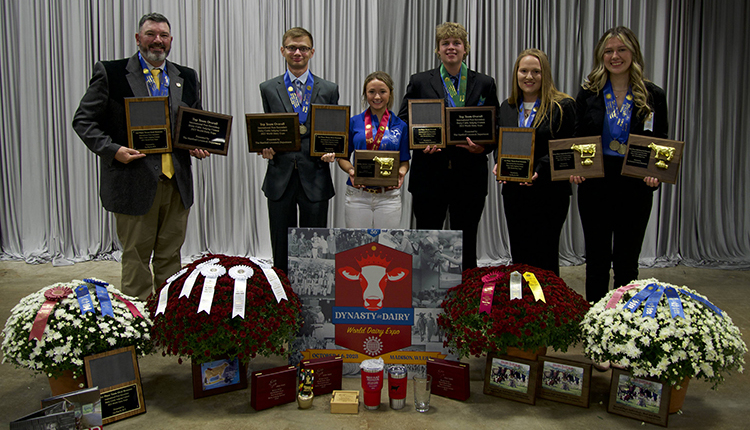There are a variety of reasons that can lead to overstocking in our freestalls. While it may be a short-term solution, a growing body of evidence demonstrates that overstocking results in both behavioral and biological changes. The practice interferes with the normal time budgets of our herd, disrupting both feeding and lying behaviors. Aggressive interactions are also more pronounced when cows are crowded at the bunk or in stalls, especially for subordinate animals.
At the Tri-State Dairy Nutrition Conference held in Fort Wayne, Ind., Juliana Huzzey, with the University of British Columbia, shared research on how stocking density impacts our feeding strategies and cattle health.
In the U.S., there are no clear guidelines for recommended space availability in freestall barns. In contrast, Canada's Code of Practice for the Care and Handling of Dairy Cattle recommends that there should be one stall for each animal in the pen and 24 inches of linear feedbunk space per cow.

As herd animals, cows are motivated to access the feedbunk at the same time in the hours following fresh feed delivery. Those who must wait for access while herdmates are at the bunk will consume TMR of compromised quality. Variation in TMR quality along the feedbunk should be avoided, particularly in overcrowded groups.
Interestingly, as this occurs, cows will not compensate for lost feeding time. Instead they elevate their feeding rate when bunk space is available. These less aggressive herdmates also have longer inactive (nonfeeding) standing times, as they wait to access the feedbunk. Since cows must stand closer together in this case, displacements occur at a higher frequency.
Stocking density at the stalls also indirectly impact feeding activity. Lying time is highly valued by cattle. Cows will sacrifice feeding time in order to lie down when both resources are limited. Rather than going to the feedbunk after milking, cows that were 150 percent overstocked at the stalls laid down about 13 minutes sooner than those that did not have stocking density pressures.

The author, Amanda Smith, was an associate editor and is an animal science graduate of Cornell University. Smith covered feeding, milk quality and heads up the World Dairy Expo Supplement. She grew up on a Medina, N.Y., dairy, and interned at a 1,700-cow western New York dairy, a large New York calf and heifer farm, and studied in New Zealand for one semester.
At the Tri-State Dairy Nutrition Conference held in Fort Wayne, Ind., Juliana Huzzey, with the University of British Columbia, shared research on how stocking density impacts our feeding strategies and cattle health.
In the U.S., there are no clear guidelines for recommended space availability in freestall barns. In contrast, Canada's Code of Practice for the Care and Handling of Dairy Cattle recommends that there should be one stall for each animal in the pen and 24 inches of linear feedbunk space per cow.

As herd animals, cows are motivated to access the feedbunk at the same time in the hours following fresh feed delivery. Those who must wait for access while herdmates are at the bunk will consume TMR of compromised quality. Variation in TMR quality along the feedbunk should be avoided, particularly in overcrowded groups.
Interestingly, as this occurs, cows will not compensate for lost feeding time. Instead they elevate their feeding rate when bunk space is available. These less aggressive herdmates also have longer inactive (nonfeeding) standing times, as they wait to access the feedbunk. Since cows must stand closer together in this case, displacements occur at a higher frequency.
Stocking density at the stalls also indirectly impact feeding activity. Lying time is highly valued by cattle. Cows will sacrifice feeding time in order to lie down when both resources are limited. Rather than going to the feedbunk after milking, cows that were 150 percent overstocked at the stalls laid down about 13 minutes sooner than those that did not have stocking density pressures.

The author, Amanda Smith, was an associate editor and is an animal science graduate of Cornell University. Smith covered feeding, milk quality and heads up the World Dairy Expo Supplement. She grew up on a Medina, N.Y., dairy, and interned at a 1,700-cow western New York dairy, a large New York calf and heifer farm, and studied in New Zealand for one semester.








